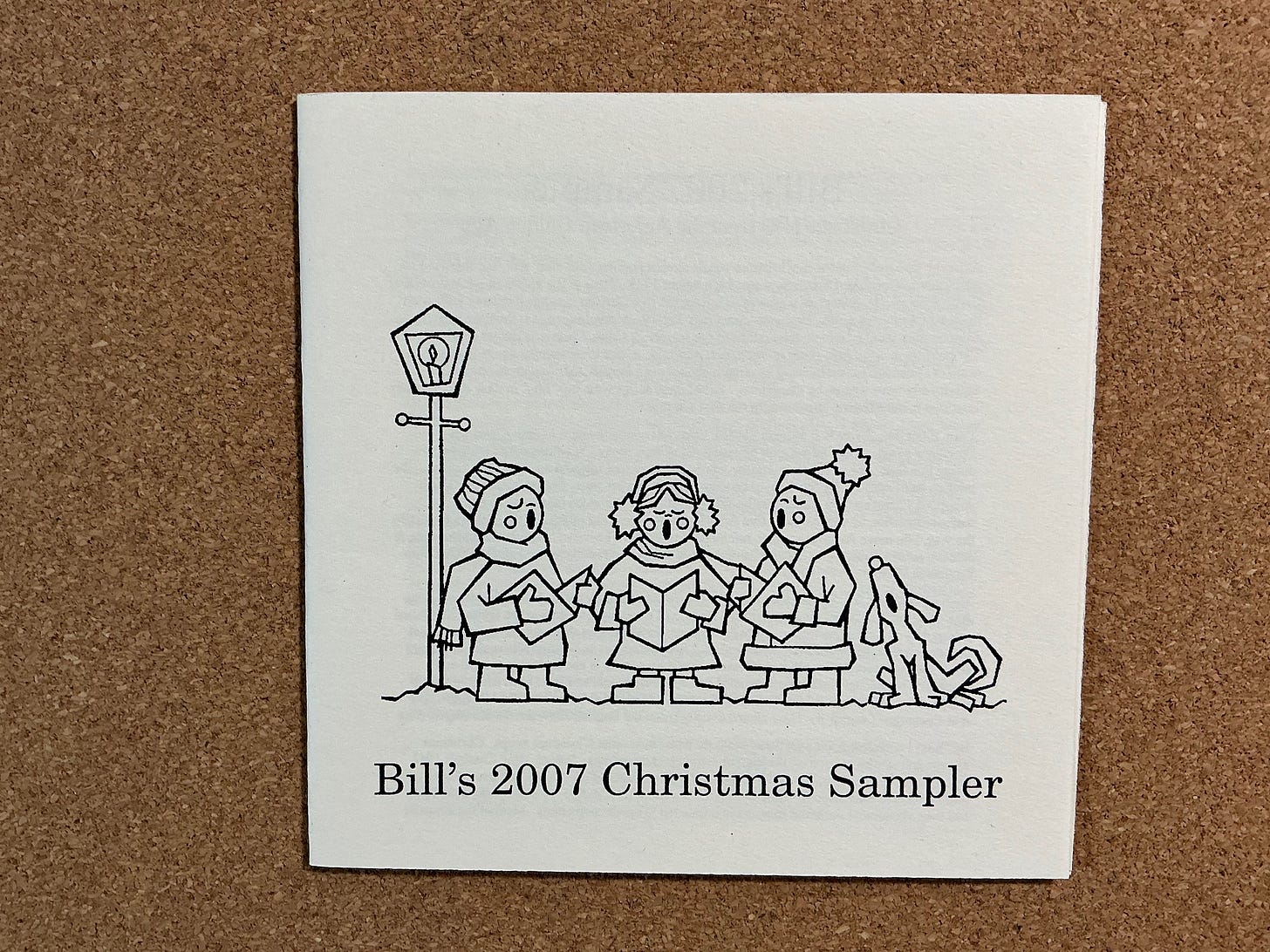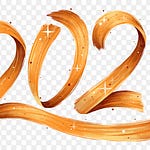Special treat alert:
A the end of today’s write-up I include a short (only 900 words) essay that I wrote as a preamble to the 2007 liner notes. I call it Christmas Hits from the American Golden Age and it discusses the history of the many Christmas songs written by Americans that have achieved lasting popularity.
Playlist:
The Christmas Song (Chestnuts Roasting …) Norm MacPherson 2:13
Baby Its Cold Outside Jack Marshall 1:56
Carol of the Bells The NORAD Commanders 2:57
Here Comes Santa Claus Owen Bradley and his Quintet 2:00
Jingle Bell Rock Ozzie Kotani 3:01
Feliz Navidad Eaken Piano Trio 3:25
Music notes
The Christmas Song (Chestnuts Roasting …) Most of the successful commercial Christmas songs that have achieved lasting popularity were written early in their songwriters’ careers. This well-known one fits that pattern. It was written by two aspiring songwriters: 23 year old lyricist Bob Wells (Robert Levinson) and 20 year old composer/arranger Mel Tormé (Melvin Torma).
Tormé came over to Wells' San Fernando Valley house for a working session during a July heatwave in 1945. At first, he couldn't find his friend, but on the piano he found a notepad with the first four lines of this song jotted down. When Bob finally appeared he said "It's so damn hot today I thought I'd write something to cool myself off." The two sat down at the piano, and in 45 minutes they had completed the song. They sped into town to shop the song around, and by the end of the day Nat "King" Cole had fallen in love with it.
It took a year before Cole could get his label – Capitol – to let him record it, and later, a huge battle with them to budget for the background orchestra to go with it. But in 1946 his recording of it spent seven weeks on the pop chart peaking at #3. (Christmas music frequently rose high in the general pop music ratings during late November and December because the ratings were based on record sales, and radio play was based on the ratings, creating a feedback loop.)
Tormé and Wells continued to collaborate for four more years. Tormé, of course, went on to become a famous pop-jazz singer. But he never recorded his most famous song as a single himself, and when he did include it on his 1992 Christmas album that record never rose above 170th on the pop charts. Wells continued with a successful song-writing career, although never reaching the same heights as this early achievement.
It is performed here by Victoria, BC based electric guitar maker and guitarist (and bassoon player) Norm MacPherson and is from Roy Forbes and Connie Kaldor’s 1985 album New Songs for an Old Celebration.
Baby Its Cold Outside This song is by the highly successful professional songwriter Frank Loesser who is best known for his Broadway musicals, such as Guys and Dolls (which included the songs A Bushel and a Peck and Luck Be a Lady Tonight), Where's Charley (Once in Love with Amy), and The Most Happy Fella (Standing on the Corner), as well as for his movie scores such as for Hans Christian Andersen (Thumbelina and Inch Worm.)
But he never intended for this song to be a commercial success. He wrote it in 1944 as a “party piece” to allow his wife Lynn to share the limelight with him at Hollywood Christmas parties. Word of their act spread quickly and got them invited to many A-list celebrity parties to which they otherwise would not have been invited. Although many movie producers tried to acquire the song, at first Lynn wanted to keep it as their own. She relented in 1949 and the song received its public premier in the Esther Williams film Neptune's Daughter, for which it won the Academy Award for Best Song. Loesser also wrote another well-known holiday song – What Are You Doing New Year's Eve?
This instrumental version is by arranger and conductor Jack Marshall who was also a top producer for Capitol records in the late '50s and early '60s.
Carol of the Bells Including this as an American Christmas song is admittedly a marginal call. The American choral director Peter J. Wilhousky did write the lyrics, but his role with regard to the melody is more as an arranger. In 1936 he based Carol of the Bells on a choral work that had been written 20 years earlier by Ukrainian composer Mykola Dmytrovych Leontovych. That was a version of Shchedryk, a Ukrainian folk song that had nothing to do with bells or Christmas, but it is about the new year.
It is one of the few well-known top Christmas songs that most people can't sing along with. That is because its appeal is primarily due to the charm of its harmonized arrangement and many choir directors use it to demonstrate their ensembles’ prowess at singing speedily.
This instrumental version, which is very unlike the standard arrangement, was recorded by the 90 member touring orchestra known as The NORAD Commanders which was active from 1959-1979. They were the military band affiliated with the joint American/Canadian North American Aerospace Defence Command which was comprised of members from the U.S. Army, Navy and Air Force, and the Canadian Royal Air Force. I got it from their 1964 album NORAD Tracks Santa.
Here Comes Santa Claus Gene Autry, who had starred as a singing cowboy in over 90 cowboy movies since the early years of sound film, was the Grand Marshal for Los Angeles' 1946 Christmas Parade. As Grand Marshal he rode in a car near the end of the parade. He later recounted:
The parade route jangled right down Hollywood Boulevard, leading to what the promoters called Santa Claus Lane. The curbs and sidewalks were lined with kids, thick as chinch bugs, craning their necks, some perched on the shoulders of their dads.
Santa was in a big sleigh a few rows back and as I rode past each block I could hear the kids, already looking behind me, shouting to each other, 'Here he comes, here comes Santa Claus!'
Autry brought "a few scribbled notes" about his parade experience to Oakley Haldeman. Haldeman managed a music publishing company that Autry had founded, and he wrote songs for him and other artists such as Doris Day, Dale Evans and Nat "King" Cole. Autry's 1947 recording of Here Comes Santa Claus was his first song for the newly-emerging baby-boom children's market for recordings, and it was the first children's Christmas song to become a pop hit, rising to #9 on the pop chart that December. It led Autry to record a number of other best-selling children’s Christmas songs.
This arrangement and recording are by Owen Bradley and his Quintet and is from their 1957 album Joyous Bells of Christmas. In 1947 Bradley had been hired to head up Decca Records’ country music division. He later became vice president of Decca's Nashville division and is considered to have been instrumental (sorry about the pun!) in developing :the Nashville sound”, a movement that aimed to broaden country music's appeal with the general public by incorporating pop music elements.
Jingle Bell Rock Jingle Bell Rock was first recorded by Bobby Helms in 1957 as a rock-a-billy novelty song, exactly 100 years after the composition of America’s first secular Christmas song, Jingle Bells. Christmas music historian Prof. William Studwell believes that the timing may not be a coincidence, and that the Elvis-inspired song was specifically written to take advantage of the publicity the anniversary might bring. The songwriters, Joseph Charleton Beal and James Ross Boothe, were both in the publicity business and are not known for having written any other songs.
Although other rock & roll performers have recorded Christmas songs and albums, their successful hits have almost always been covers of the Christmas standards from earlier decades. Very few Christmas songs that originated in rock 'n' roll have had lasting popularity and this early rock-adjacent song song is one of those exceptions.
This ki ho’alu (Hawaiian slack key guitar) interpretation of the melody is by the highly respected slack-key teacher Ozzie Kotani. This is the lead song on one of two Christmas sampler albums released by Dancing Cat Records, a specialty heritage-oriented music label founded by new-age pianist George Winston, intended to introduce the new listeners to the locally-known masters of that regional specialy style of guitar playing. The recordings on the Dancing Cat samplers were all specially recorded for those Christmas music samplers.
Sampler-making recollections
2007 brought something completely different from all my other samplers besides being all-instrumental. Early on, my focus had moved to relatively uncommon Christmas songs, and my samplers were primarily organized for active listening rather than for use as background music. However my daughters Gillian and Wendy suggested that I compile one that was intended to be background music – for Christmas parties, or for folks who were engaged in pre-Christmas chores such as baking, decorating or wrapping gifts.
I thought that the best way to achieve this would be by going entirely with the very familiar songs from an American golden age of pop Christmas songs that began in the 1930s and continued into the 1960s. These are songs that I normally don’t include in my compilations because they are already so familiar. But in the context of Christmas background music it is familiarity that makes the music sound Christmassy. It would also give me the opportunity to tell the background stories to these “Christmas favourites” in my liner notes. I had good documentation about all of them online and in my growing reference library, but most people don’t know their stories.
It took a couple of years to select the music and I followed a different format than usual for planning this sampler. I made a list of the most well-known American Christmas music and then looked through my collection of albums for good instrumental versions. My collection includes music from other people’s Christmas compilations as well as the music that had been uploaded online as “sharity” by other Christmas music collectors. In some cases I ended up with a lot of versions to choose from - for example, my list had about 20 versions of Santa Claus is Coming to Town. On the other hand I found no good instrumental versions of Brenda Lee’s Its a Marshmallow World at Christmas.
The structure of this sampler followed my usual approach of presenting the tunes in musical movements, rather like a composer develops a symphony. After a prelude – in this case a composition featuring songwriter Johnny Marks’ Christmas hits that actually is called an overture – I clustered songs that were about winter activities. That led into songs about romance (and seduction), and then anticipation of Christmas. Then there were tunes of the (few) pop Christmas songs rooted in the Nativity story, leading into songs about Santa Claus. Finally, to end on a warm note I had songs about home, family and friends, concluding with Oscar Peterson and Jack Schantz’ version of I’ll Be Home for Christmas.
Interestingly, one of the biggest challenges I had was choosing selections that would musically stay in the background and not draw too much attention to themselves. I wanted an overall feel that was soothing, but not bland or “low energy,” and certainly not boring.
This is another time when I soon came to regret my choice of image to put on my liner notes’ cover. I got excited when I found the drawing online because the composition would work so well as a cover but neglected to factor in that does not convey that this is a collection of instrumental tunes.
The American golden age of Christmas hits
Although many very old European Christmas carols remain popular year after year, there are no well-known American Christmas songs from before 1849. (By the way, I do mean American songs, not North American. The only Canadian Christmas song to achieve international fame is The Huron Carol, which was written 200 years earlier than that in 1643.) But in the 1850s and '60s in a brief flurry of creativity American songwriters composed five Christmas songs that have withstood the test of time.
Up on the Housetop and Jingle Bells were revolutionary at the time in that they were entirely secular in their celebration of the season. It Came Upon a Midnight Clear, We Three Kings and O Little Town of Bethlehem were also meant to be popular songs (i.e., they were not intended as hymns to be sung in church) even though all three are songs about the nativity and were written by clergymen. All of these songs became famous in their day and they continue to be familiar in the 21st century.
Then, other than Away In a Manger (1885) there was a 60 year drought in American-written Christmas songs that achieved lasting popularity. Of course, many Christmas songs were written during this time, and some were popular when they were first introduced. But none captured the public's heart sufficiently for them to be sung by people year after year. For the most part, the Christmas music that was popular in America continued to be the traditional European carols, noëls and weihnachtslieder, as well as the above-listed six American Christmas songs.
Then in 1933 and '34, Santa Claus is Coming to Town and Winter Wonderland began a golden age of American Christmas song-writing. Dozens of songs were written in the United States and recorded by American performers over the next couple of decades which became both big commercial successes when they were first introduced and renewed their popularity when other performers recorded covers of them.
Their fame is not limited to the US and Canada. These songs have been translated into many languages, and have been adopted world-wide in the same league as the German Stille Nacht (Silent Night), the French Les Anges Dans Nos Campagne (Angels We Have Heard On High) and the English God Rest Ye Merry, Gentlemen and Hark the Herald Angels Sing.
By "hits" I don't just mean that these songs do better than other Christmas songs. Every year Christmas albums and singles are among the biggest-selling pop recordings. Indeed, Bing Crosby's 1942 recording of White Christmas is the biggest selling recording of any type, of all time -- over 100 million records sold. And the song hasn't just been a hit for Crosby: at least 18 other performers have had their own versions of the same song make it onto the "Top 40" pop charts. Most of the songs in this compilation have been on the general "Hit Parade" pop charts at least five times. It is rare for any other type of pop song to become a charted hit by more than one or two artists.
Besides buying the records, these are the songs that we sing along with at Christmas parties and at other seasonal gatherings. We all know the lyrics (at least for the chorus and the first verse) and even "non-singers" join in.
Then, for some reason, the magic stopped. The flood of American Christmas hits slowed down to a trickle in the late 1950s. As I write this [in 2007] the most recent songs to become "Christmas classics" are Jose Feliciano's Feliz Navidad, which was written and recorded in 1970, and John Lennon and Yoko Ono’s Happy Xmas (War Is Over) in 1971. When I began to work on this compilation and research I was seeking to understand the dynamics of this boom-bust cycle in Christmas pop songwriting. I cannot say that I achieved my objective, although I did discover some interesting stories behind the songs, and a few interesting statistical facts.
Despite America's cultural diversity, almost all of the hit songs depict a "white" vision of the Christmas season: The only exceptions are Mary's Boy Child and Feliz Navidad. About half of the Christmas hits were written by Jewish songwriters. None were written by clergy.
Only two were written by women (Little Drummer Boy and Do You Hear What I Hear) and only one is by a black person (Mary's Boy Child). These last three exceptions are all songs about the nativity story, yet by far the majority of commercially-successful Christmas songs are secular in nature. Almost all of the others were written by professional commercial songwriters. Only one (Feliz Navidad) was written by the singer who had a hit with the song.
As I write this I still do not understand why no new Christmas songs, American or otherwise, had broken into the canon of “Christmas favourites” during that time. I suspect that it had something to do with the evolution in the media through which we listen to Christmas music.
Since then, Mariah Carey’s All I Want for Christmas Is You seems to have entered onto the Favourites list, but frankly, I’m not really up-to-date about recent pop music. Even within my narrow specialty of Christmas music it is a blind spot for me. But in compiling this year’s sampler I did develop a new respect and appreciation for the songs that were commercial products from America's professional pop songwriters in the 1930s to '70s.
These are a body of Christmas songs that, as a folk music fan, I had dismissed – my senses dulled by annual overexposure and by the crass insincerity of so many of the versions of these songs that one can't help but to hear at this time every year. But if one can overlook that, there is some good music here. But even so, I must admit that this is another of my samplers that I don’t listen to very often myself. I don’t do background music, and as a singer rather than a musician, when I am actively listening I am more of a song person.














Share this post